Overview
Let’s cut to the chase. You love your Jeep TJ. You know it, I know it — and anyone who’s spent time on the trails knows it too. But loving your rig and understanding what makes it perform — or where it needs a little help — are two very different things. This post breaks it all down: where your TJ shines, where it could use some upgrades, and how the right jeep tj custom parts can help you get more from every mile.
We’ll cover where your TJ wins, where it needs support, and how the smartest jeep tj wrangler accessories let you keep up with — or out-wheel — your buddies in their newer rigs. You’ll get facts, clear advice, and real-world insights from off-roaders who’ve pushed these vehicles hard and built them up right.
Table of Contents
- Why Knowing Your TJ’s Strengths and Weaknesses Helps You Build Smarter
- The Geometry Advantage — Why the TJ Owns Tight Terrain
- Where Stock TJs Fall Short — And How to Fix That
- Comfort & Tech That Shows Its Age
- Nice-to-Have Upgrades That Take Your TJ from Good to Awesome
Why knowing your TJ’s strengths and weaknesses helps you build smarter
Every trail tells the truth — and the truth is, no rig is perfect out of the box. The Jeep TJ is no exception. Built from 1997 to 2006, it combined the solid axles of its ancestors with coil spring suspension — a big leap forward at the time. But let’s not romanticize it. The TJ came from an era before traction control, electronic lockers, or beefed-up factory armor.
👉 That’s why knowing what your TJ does well (and where it will let you down) isn’t optional — it’s the key to building a rig that fits the terrain you actually run. Skip this step, and you’ll either waste money on shiny parts you don’t need, or worse — snap a bracket mid-climb because you didn’t shore up a weak spot.
Is a stock TJ good enough for off-roading?
Let’s get real. You bought a TJ — or you kept yours all these years — because you knew it could hit the dirt straight from the lot. And you weren’t wrong. The stock TJ? It’s a legit off-roader. Solid axles. Coil springs. A frame built to handle way more than a Starbucks parking lot. In fact, when it rolled out in the late ’90s, folks were blown away by how much more capable it felt than the YJ it replaced. That compact TJ frame and suspension you see on so many rigs today? Back then, it wasn’t for show — it was because people were taking their stock TJs onto trails where old CJs struggled.
But here’s where the story gets interesting — and why knowing your TJ’s strengths and weaknesses makes all the difference. A stock TJ can absolutely handle forest trails, dirt roads, and light rock crawling. You’ll have fun. You’ll wave at the overbuilt rigs wondering why you’re smiling. But — and you knew that was coming — the limits show up faster than you think when the terrain turns serious.
Those open differentials? They’re why one wheel spins uselessly when you hit uneven ground. That stock gearing — maybe 3.07 or 3.73 if you got lucky — feels fine on 30s, maybe 31s. But slap on bigger tires without changing the gears, and suddenly that climb you thought would be a breeze turns into a gas-pedal fight. And let’s not even talk about the factory protection — because frankly, it’s barely there. The first rock that kisses your oil pan will remind you why jeep skid plate upgrades exist.
Jalopnik, in their farewell to the JK touched on something that hits home here. They praised how the JK brought daily-driver comfort to the Wrangler line — and they weren’t wrong. But what they didn’t say outright is what you and I know: the TJ wasn’t trying to be comfortable. It was trying to be capable. The JK gained size and polish. The TJ kept the guts that let you weave through tight spots, pivot on rocks, and still get home in one piece.
👉So yes — a stock TJ is good enough for off-roading. It’s good enough for real trails. But if you want to chase those black-diamond trails, if you want to run Moab or the Rubicon, if you want to stop worrying every time you hear a scrape — that’s when the story shifts. That’s when jeep tj body armor, a real skid plate jeep wrangler, smarter gearing, and the right jeep tj wrangler accessories start turning a good rig into a great one.
And that’s where this guide is going next. Because you didn’t come here just to hear yes or no. You came here to see how to build it smart.

The Geometry Advantage — Why the TJ Owns Tight Terrain
When you’re threading through boulders or working your way up a narrow, rutted climb, geometry is what saves your day — or wrecks it. And that’s where the TJ earns its stripes. Its proportions weren’t designed for mall parking lots. They were made for trail work. You can feel it the first time you point your TJ at a line your buddy’s longer rig just skipped. This isn’t about horsepower or fancy traction modes. It’s about simple, honest numbers — and the way Jeep got them right with this rig.
The Short Wheelbase Difference
The TJ’s wheelbase is 93.4 inches. That’s the distance from the front axle to the rear axle — and it’s a big deal. Why? Because the shorter that distance, the easier it is to climb up and over things without getting stuck with your belly on a rock. That’s called your breakover angle — and the bigger that angle, the less chance your Jeep drags the center and gets stuck.
Stock TJ breakover angle? About 22°. That means you can crest ledges, cross ditches, and top out on obstacles where rigs with longer wheelbases — like a JK Unlimited at 116 inches — have to work a lot harder or stack rocks. Every time your buddy in a longer rig has to back up and try again, you’re already through.
That’s why adding the right jeep wrangler tj accessories — like rock sliders to guard your body, or a jeep tj rear bumper designed for better departure clearance — helps you take full advantage of what the geometry gives you.
Coil Spring Superiority Over Leafs
Here’s where Jeep got smart. They ditched the leaf springs from the YJ and gave the TJ coils. And that changed everything. Coils don’t just ride nicer — they let your axle move more as you cross uneven ground. This is called articulation — the ability of one tire to drop into a hole while the other stays planted.
Why does that matter? Because it keeps your tires in contact with the trail. More contact means more grip. And more grip means fewer moments where your Jeep stops crawling and starts spinning.
In numbers? The TJ had about 7-8 inches of front wheel travel stock — way better than the old YJ’s 5-6. That means where a YJ would lift a tire and lose traction, a TJ keeps its rubber on the dirt and keeps crawling.
That’s why smart upgrades like jeep tj body armor and a skid plate jeep wrangler aren’t just about avoiding damage — they help make sure your TJ survives the trail while your suspension does what it’s built to do.
CJ Pony Parts breaks this down well, showing how the TJ’s switch to coil springs gave it real-world articulation and ride comfort advantages over the YJ’s leafs.
Compact Size: Trail Agility That Modern Rigs Can’t Match
Size matters — and smaller is better on tight trails. The TJ is about 66 inches wide and 155 inches long. Compare that to a JK: nearly 74 inches wide and up to 184 inches long for a 4-door Unlimited.
Why should you care? Because on a narrow trail lined with rocks or trees, every extra inch of width is another chance to take damage. Every extra foot of length makes tight turns harder, switchbacks trickier, and obstacles more of a fight.
The TJ’s compact size means you can thread it through places where modern rigs just don’t fit without scraping, backing up, or holding your breath. When you back that up with a tj jeep front bumper designed to clear obstacles, jeep tj body armor where it counts, and a good jeep skid plate, you’ve got a Jeep that makes tight terrain fun — not frustrating.
You can see the difference in CJ Pony Parts’ TJ vs JK comparison — the TJ’s smaller footprint makes it better suited to tight trails where a JK starts feeling clumsy.

Where Stock TJs Fall Short — And How to Fix That
Here’s the truth most of us learn the hard way: a stock TJ will get you down the trail, but it won’t always get you home with your pride (or your parts) intact. That doesn’t mean the TJ is weak — it means Jeep gave you a blank canvas. And if you want to take on harder trails, steeper climbs, and gnarlier rocks, you’ve got to finish what the factory started.
Weak Gear Ratios and Power Loss on Climbs
You might not think about gear ratios when you first hit the trail — but you feel them. The stock TJ came from the factory with 3.07 or 3.73 gears, paired to 30-inch tires. That setup worked fine for the era: enough torque for mild trails, enough fuel economy for daily driving.
But here’s where things fall apart: as soon as you start upgrading tires — 33s, 35s, or bigger — that stock gearing starts to betray you. Your crawl ratio tanks. Instead of smooth, controlled climbs, you’re left feathering the clutch, revving high, and hoping not to stall halfway up a ledge.
Let’s put some numbers to it. A TJ with 3.07 gears on 30s gives you a crawl ratio around 29:1. That’s barely adequate for moderate off-roading. For comparison? A modern Rubicon starts at 73:1. That means your buddy’s newer rig can idle up a boulder that leaves you fighting the gas and clutch just to keep moving.
👉 The smart move? When you regear, take the opportunity to upgrade. A jeep tj ford 8.8 swap kit gives you a stronger axle that handles the stress of big tires without complaint. Get ford 8.8 rebuild kit so you know every internal part is trail-ready from day one. And when it comes to dialing in your alignment, don’t forget how valuable an axle offset plate — or better yet, axle offset plates — can be in getting the geometry just right.
Limited Underbody Protection (Until You Upgrade)
The stock TJ gives you barely-there skid protection — a thin transfer case plate, and not much else. The oil pan, transmission, and fuel tank? All exposed. One hard hit on a rock, and you’re risking real trail damage.
👉 That’s why serious off-roaders add real armor. A skid plate jeep wrangler or full jeep skid plate setup keeps vital parts safe. The right jeep tj body armor stop trail rash before it starts. And smart details — like a dedicated TJ steering box skid plate — protect critical steering components from rock strikes that could ruin your day.
And don’t forget your bumpers. A strong tj jeep front bumper or jeep tj rear bumper gives you clearance, recovery points, and confidence when things get rough.
👉 Many upgrades — like jeep wrangler armor — add function, not just protection. Think hi-lift jacking points, gear mounts, and more.
If you wheel hard, jeep skid plates and the best jeep aftermarket parts aren’t optional — they’re what get you home.
Vague Steering: What You Notice on Tough Trails
If you’ve ever pointed your TJ at an obstacle, cranked the wheel, and felt like the tires didn’t get the memo, you’ve met the steering vagueness that haunts stock setups. The factory steering components — including the box, linkages, and brackets — were designed for street tires and mild trails, not 35-inch meats clawing over boulders.
👉 You feel it when you hit deep ruts or off-camber turns. That slight delay. That wandering front end. And on tough trails, that’s not just annoying — it’s dangerous. This is where jeep tj wrangler parts designed for strength make the difference between a clean line and a white-knuckle recovery.
The fix? Reinforce and upgrade. A quality steering brace ties the steering box to both frame rails, stopping flex before it starts. Pair it with stronger linkages, brackets, and bushings from the steering and suspension collection, and you’ve got a steering setup that actually listens when you turn the wheel.
And let’s be real — this is the time to think about protecting those parts too. A sturdy jeep wrangler bumper up front gives your steering components a break from direct hits. The right jeep bumpers wrangler options combine clearance and protection in one.
When the terrain gets serious, vague steering is what turns confidence into caution. Upgrades here don’t just feel better — they let your jeep offroad parts work together so you stay in control where it matters most.
Nice-to-Have Upgrades That Take Your TJ from Good to Awesome
Once you’ve tackled the essentials — gearing, armor, steering — you start looking at the upgrades that make your TJ not just capable, but a joy to drive. These aren’t about survival on the trail; they’re about making every trip better, safer, and let’s be honest — more fun.
👉 For starters, simple add-ons like a Hide-A-Step or dead pedal don’t just add comfort. They give you control — helping you stay planted when you’re bouncing over ruts or easing down a descent. Little things, big difference.
An onboard air system? That’s one of those upgrades you don’t know you need until you have it. The ARB compressor + tank bundle lets you air down for traction and fill back up without waiting for a buddy’s pump — or worse, limping to a gas station.
👉 These kinds of upgrades turn good rigs into great ones.
And don’t forget the finishing touches that complete the package: functional jeep wrangler tj body lift or jeep wrangler tj brake lines that make sure your stopping power keeps up with your trail ambitions. Even jeep wrangler tj skid plate upgrades help ensure your fun doesn’t end with a dented drivetrain.
👉 The goal? Build smart, enjoy the drive, and let the best jeep aftermarket parts make your TJ not just ready for the trail — but ready for anything.
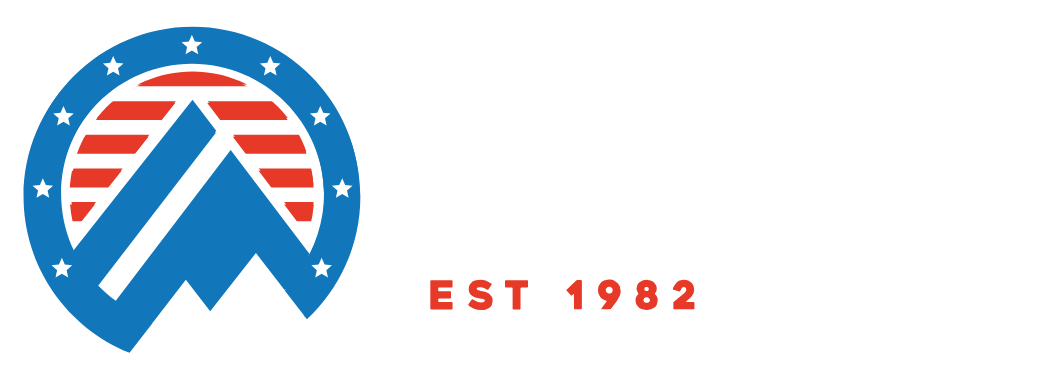
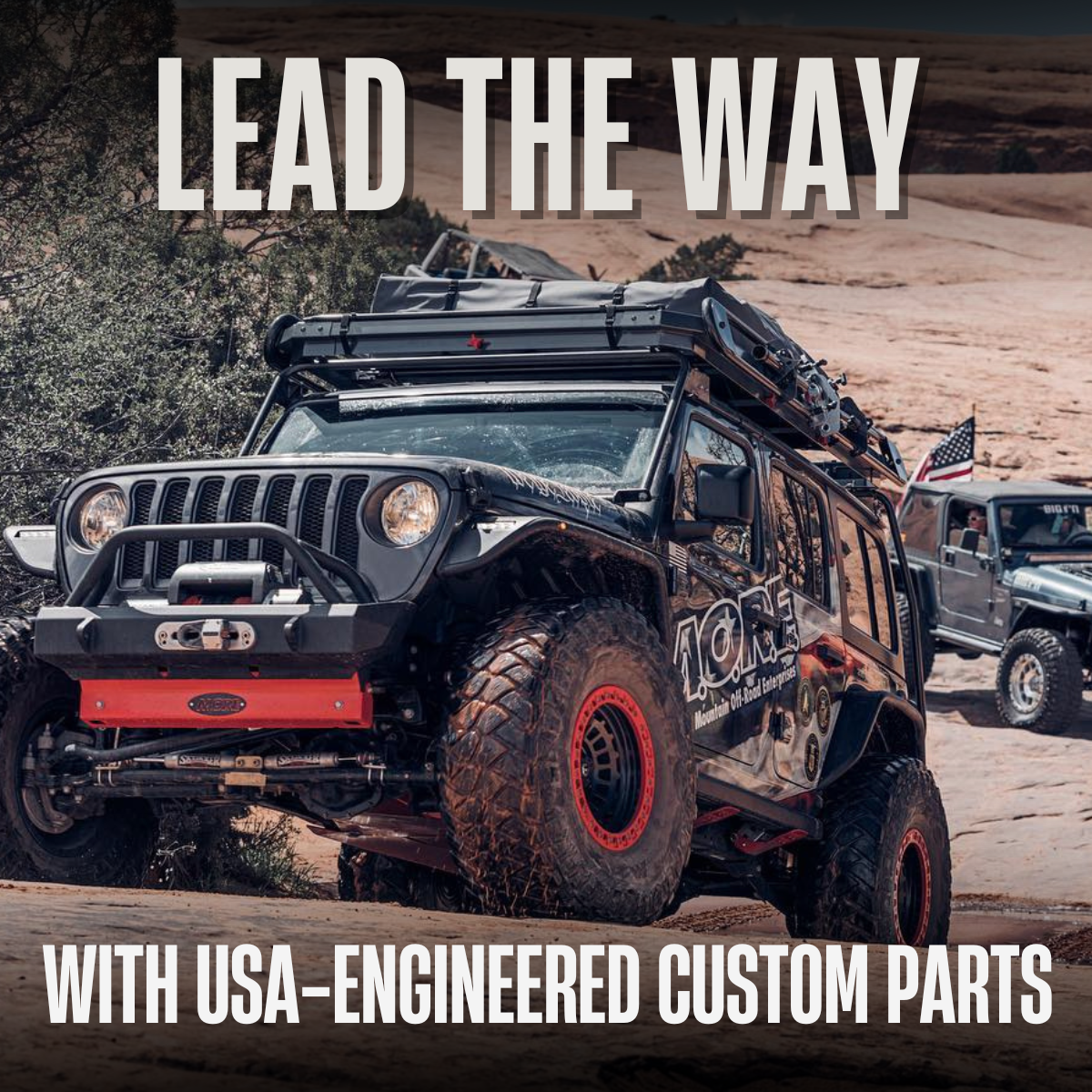
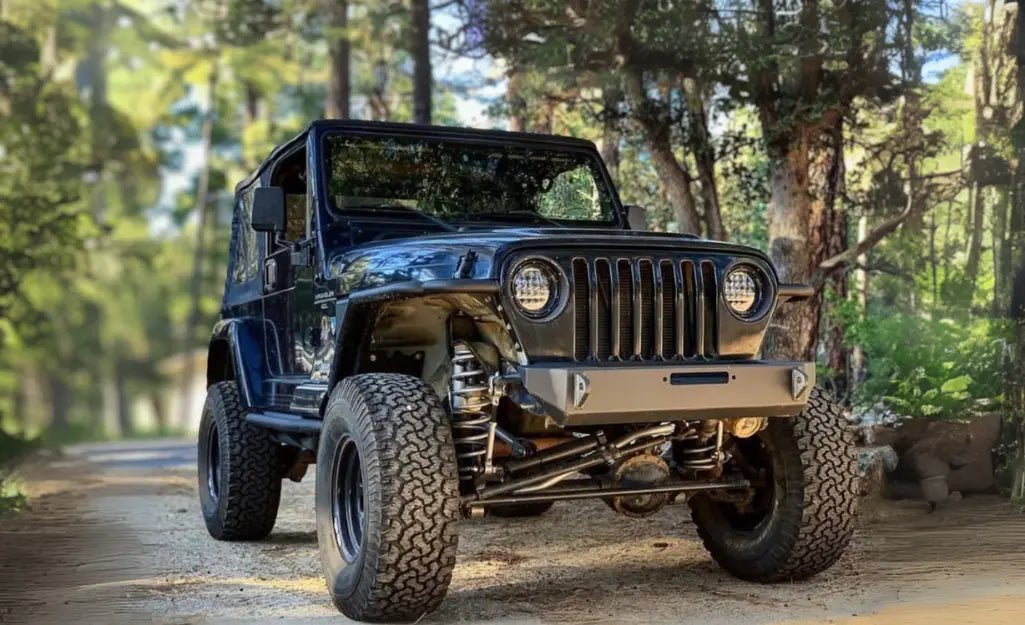
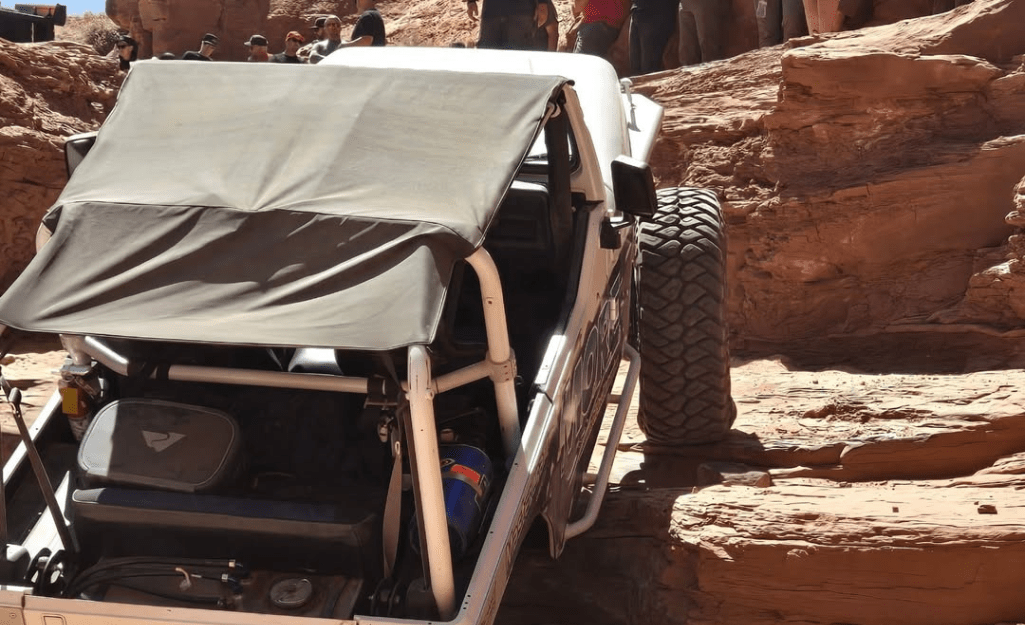
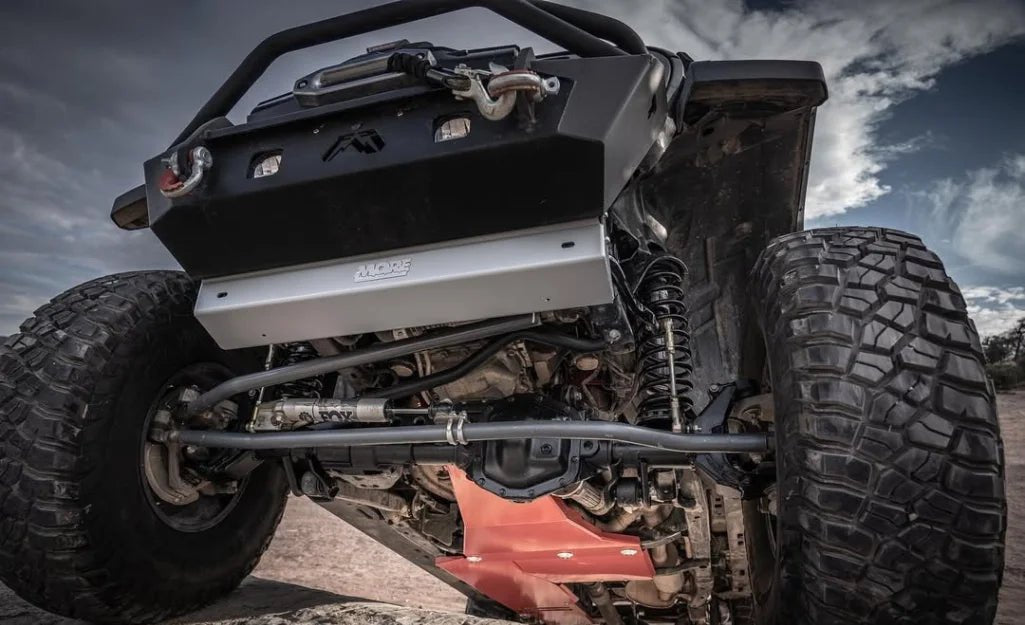
Leave a comment
This site is protected by hCaptcha and the hCaptcha Privacy Policy and Terms of Service apply.